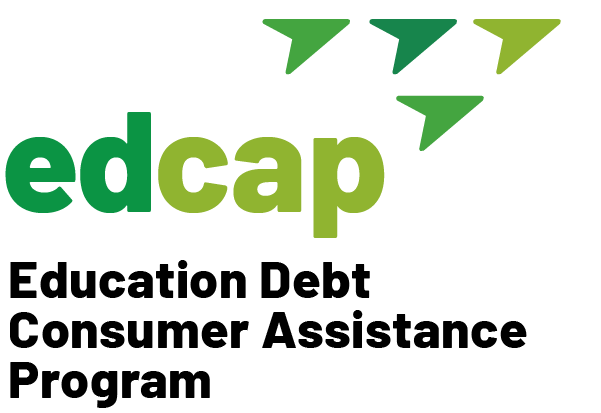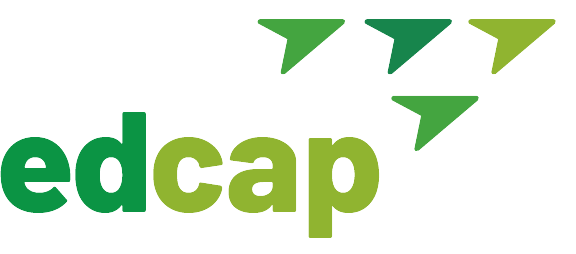Understanding the Challenge
Providing children with a higher education is a common aspiration among parents, but rising college costs pose a significant financial hurdle. Despite this, many parents seek ways to support their children’s educational pursuits while managing the associated expenses.
Exploring Parent Borrower Options
When it comes to funding college, parents often face the challenge of covering the gap between available financial aid and total cost of attendance, also known as your remaining out-of-pocket cost. Federal Direct Parent Plus Loans and private student loans are two common options available to parents to bridge this gap.
Federal Direct Parent Plus Loans
Federal Direct Parent Plus Loans offer parents a viable solution to finance their dependent children’s undergraduate education, covering the cost of attendance minus any aid, grants, and scholarships. While these loans involve a light credit check and no income requirements, enabling you to access funds, there’s a risk of borrowing beyond your means and jeopardizing your financial stability. To make informed decisions, you must understand essential details such as current and projected loan amounts, interest rates, and anticipated repayment obligations.
Tip: Use a basic loan calculator. Input what you expect to borrow to finance your child’s entire education. Use the current interest rate for Parent Plus loans (9.08% for the upcoming academic year). If you borrow $25,000 per year, by the end you will owe $100,000 plus any accumulated interest. A monthly payment would be at least $1,500 to pay it off in 10 years.
Know that you cannot transfer or assign Parent Plus loans to a child. You are legally responsible for the loan regardless of any agreement you have with your child. Additionally, it’s common for children to have their own financial obligations post-graduation, making it uncertain whether they can help you repay these loans.
Tip: It’s generally better for a dependent student to borrow up to the allowed amount in federal student loans before a parent takes out Parent Plus Loans, as the interest rate will be lower and there are more repayment plan options available for the student.
Loan Benefits and Challenges
Parent Plus Loans provide options for deferment or forbearance if you are struggling to repay, are eligible for forgiveness programs, and are dischargeable upon death. However, it’s important to note that these loans typically come with higher interest rates and more limited repayment options compared to loans issued to student borrowers.
Maximizing Loan Benefits
Parents can take proactive steps to minimize the financial burden of Parent PLUS Loans by exploring forgiveness programs and the Income-Contingent Repayment (ICR) plan. The ICR plan bases payments on the parent’s income and household size and is the only income-driven repayment plan available to Parent PLUS Loan borrowers after consolidating a Direct Parent PLUS loan. Understanding the loan’s terms and potential repayment strategies can help alleviate financial stress.
Private Student Loans
The second and usually less desirable option for funding a college gap is through private student loans. Terms will vary from lender to lender, and these loans do not offer most of the protections available in the federal system such as payments based on income and forgiveness and discharge programs.
Key Considerations
Private student loans offer varying terms and interest rates, often requiring a creditworthy co-signer. Parents should carefully evaluate the loan’s terms, repayment options, and potential implications before committing. In general, federal Parent Plus loans are better.
Caution: Co-signing on private student loans means assuming full responsibility for the debt. If you co-sign a loan and the primary borrower cannot pay, your credit will be negatively impacted and you may be subject to litigation.
Tip: Beware of variable interest rates. Private loan interest rates can be fixed or variable. While variable rates may seem appealing in a low-interest-rate environment, they can become burdensome if rates rise unexpectedly, making payments unaffordable as seen in recent years. Currently, interest rates on private loans can reach 13%-15%, nearing credit card levels. However, fixed-rate loans offer stability, and if taken out in a high-interest-rate environment, may allow for refinancing as rates decrease.
Managing Private Loan Debt
Parents facing challenges with private student loan debt should explore refinancing into a lower fixed interest rate. Get quotes from different lenders to select your best option. You do not need to refinance with your same lender and some lenders don’t offer this option. Borrowers can also request interest-only payments or forbearance as short-term measures to prevent delinquency and default. However, if you find yourself in this situation, assess your ability to repay long-term. If the loans are in default, explore settlement options. Seeking advice from financial professionals or legal aid organizations can provide guidance on navigating repayment difficulties.
Final Thoughts on Making an Informed Decision
Parents should prioritize exploring all available financial aid options, including federal loans and institutional aid, before considering private loans. Understanding the total cost of education and potential repayment obligations is essential for informed decision-making. Remember that the goal is for your child to get an education and that should be the focus. Getting an affordable education is still possible. Getting the “college experience” without regard to the cost, however, is unlikely to result in a good return on investment long term and may risk you and your entire family’s financial security.
What’s next? Seek assistance.
For parents grappling with student loan debt, resources such as financial aid offices, EDCAP consultations, and legal aid organizations offer valuable support and guidance. Empowering parents with knowledge and resources can help them effectively manage their financial obligations and support their children’s educational aspirations.
Parent Plus Loan FAQs
Can you take out Parent Plus loans to help pay for a child’s graduate degree?
No. Parent Plus loans are available to help pay for a dependent’s undergraduate degree only.
How much can you borrow in Parent Plus loans?
You can borrow up to the difference between the Cost of Attendance and the total amount of aid the student will receive. In the example below, the annual COA is $35,000 and the student received a total of $19,500 in aid, including federal student loans. That leaves a balance of $15,500. The parent can borrow up to that amount in Parent Plus loans:
| Cost of Attendance | $35,000 |
|---|---|
| Federal Student Loans | $5,500 |
| Grants and Total Scholarships | $14,000 |
| Total Aid | $19,500 |
| Balance | $15,500 |
How do Parent Plus loans work?
Parent Plus loans are granted to one parent and require a credit check, albeit with less stringent standards than private loans. If the parent fails to meet credit requirements, the government may require an endorser. An endorser on a federal Plus loan is akin to a co-signer on a private loan but with notable differences:
- The endorser’s credit may be impacted if the primary borrower defaults. However, federal student loans, including Parent Plus loans, are dischargeable in the case of the borrower’s death, relieving the endorser of responsibility. This differs from private loan co-signers.
- If the borrower qualifies for discharge or loan forgiveness due to disability or public service, the endorser is not obligated to pay.
- For further details on the endorser’s obligations, refer to the Direct Plus Loan Master Promissory Note.
What challenges do Parent Plus borrowers face?
Parent Plus borrowers typically encounter higher interest rates compared to federal loans issued to students. These rates cannot be refinanced or lowered within the federal system. Additionally, Parent Plus loans are not eligible for the more affordable repayment plans like SAVE.
How can Parent Plus borrowers minimize monthly payments and expedite debt repayment?
Here are some strategies:
- If you are married and file your taxes jointly, payments in an IDR plan such as ICR will be based on your combined income. If you file your taxes separately the payment will be based on your income alone. (Consult an accountant before changing tax-filing status).
- Consider having the spouse with lower income take out the loans and file taxes separately to make payments more manageable.
- Forgiveness programs like PSLF and IDR Forgiveness require that you accumulate qualifying payment credit (for 10-25 years depending on which program you’re pursuing). But you will not get credit while you are in a school deferment, even if you make payments. If you are pursuing one of these programs, you can waive the in-school deferment when you obtain your loan and start getting credit towards forgiveness right away. Too often, Parent Plus borrowers spend years in deferment and miss the opportunity to eliminate their debt sooner.
- Remember the Total and Permanent Disability (TPD) Discharge option, which offers debt relief for borrowers with qualifying disabilities.
Private Loan FAQs
How does one get a private student loan?
Generally, schools will give borrowers some private lender options. But borrowers should shop around until they find a loan with the most attractive terms. The lower the interest rate and the longer the payback period, the lower your monthly payment will be. Young student borrowers who have limited credit history will require a co-signer. Most often, that is one or both parents (though it can be anyone who is willing). Loan terms will be determined by the creditworthiness of the primary borrower (the student) and more importantly, the co-signer. The better your credit score, the better deal you will get.
What does it mean to be a co-signer?
Co-signing a private loan entails assuming full responsibility for the debt if the primary borrower cannot pay. Delinquencies and defaults can impact your credit report, and you may be sued by the lender alongside the primary borrower.
Is there ever a scenario in which a private loan is better than a federal loan?
Yes, there could be situations where a private loan is preferable. For instance, if you have a Parent Plus loan with a high fixed interest rate, refinancing into a private loan with a lower rate might make sense, especially if you’re not pursuing forgiveness or discharge in the federal system. But beware, once you leave the federal system by refinancing a federal into a private loan, you cannot go back into the federal system.
What if you cannot afford the monthly payments on your private student loan?
You can request forbearance or a reduced payment from the lender, although unpaid interest during these periods will accumulate. This is a short-term solution. Assess your ability to repay long term and seek advice if needed on the consequences of default.
Do private loans have a statute of limitations?
Private loans have a Statute of Limitations, after which the lender cannot pursue legal action to collect the debt. Seek advice from financial professionals or legal aid organizations for assistance with private student loan debt management.
Useful Links
Glossary
- Deferment: A temporary postponement of loan payments, usually granted under specific conditions, such as returning to school or experiencing economic hardship. During deferment, interest may or may not accrue, depending on the type of loan.
- Forbearance: A temporary reduction or suspension of loan payments, often granted during financial difficulties. Interest continues to accrue on all types of loans during forbearance, which can increase the total amount owed over time.
- Co-signer: An individual, often a parent or guardian, who agrees to take on the responsibility of repaying a loan if the primary borrower is unable to do so. Co-signers are equally liable for the debt, and their credit can be affected if the loan is not repaid.
- Variable Interest Rates: Interest rates on a loan that can fluctuate over time based on changes in the market or economy. While initially lower than fixed rates, they carry the risk of increasing, potentially making loan payments more expensive over time.
- Fixed Interest Rates: Interest rates on a loan that remain constant throughout the life of the loan. Fixed rates provide stability and predictability in repayment, protecting borrowers from the risk of rising interest rates.
- Refinancing: The process of replacing an existing loan with a new one that has different terms, such as a lower interest rate or different repayment period. Refinancing can help reduce monthly payments or the total cost of the loan over time.











